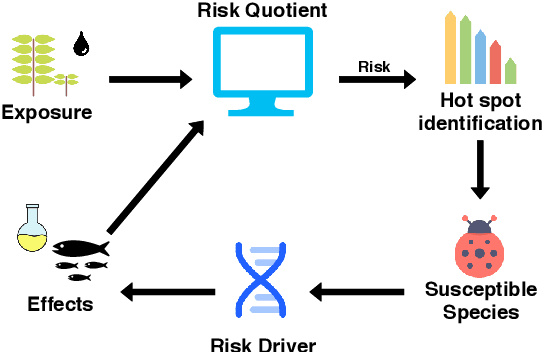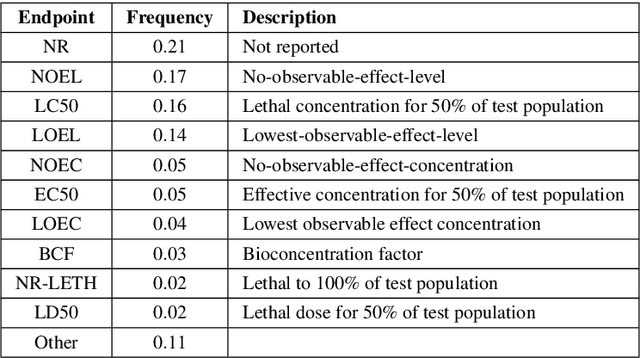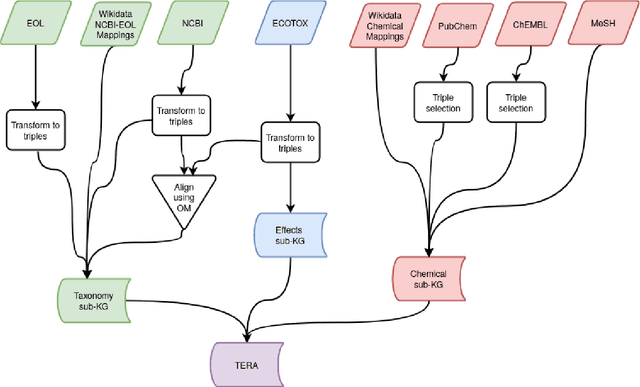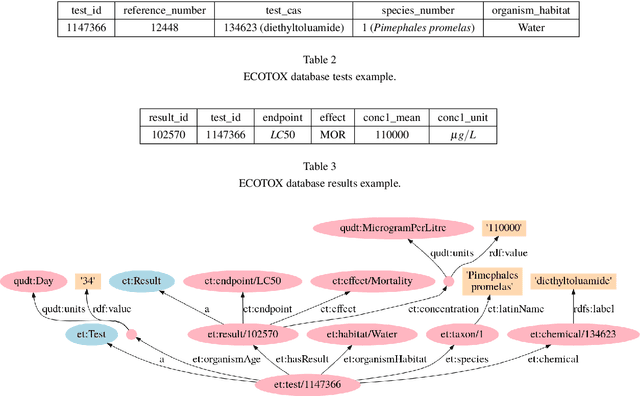Erik B. Myklebust
Norwegian Institute for Water Research, Department for Informatics, University of Oslo
Prediction of Adverse Biological Effects of Chemicals Using Knowledge Graph Embeddings
Dec 08, 2021



Abstract:We have created a knowledge graph based on major data sources used in ecotoxicological risk assessment. We have applied this knowledge graph to an important task in risk assessment, namely chemical effect prediction. We have evaluated nine knowledge graph embedding models from a selection of geometric, decomposition, and convolutional models on this prediction task. We show that using knowledge graph embeddings can increase the accuracy of effect prediction with neural networks. Furthermore, we have implemented a fine-tuning architecture which adapts the knowledge graph embeddings to the effect prediction task and leads to a better performance. Finally, we evaluate certain characteristics of the knowledge graph embedding models to shed light on the individual model performance.
Knowledge Graph Embedding for Ecotoxicological Effect Prediction
Jul 02, 2019



Abstract:Exploring the effects a chemical compound has on a species takes a considerable experimental effort. Appropriate methods for estimating and suggesting new effects can dramatically reduce the work needed to be done by a laboratory. In this paper we explore the suitability of using a knowledge graph embedding approach for ecotoxicological effect prediction. A knowledge graph has been constructed from publicly available data sets, including a species taxonomy and chemical classification and similarity. The publicly available effect data is integrated to the knowledge graph using ontology alignment techniques. Our experimental results show that the knowledge graph based approach improves the selected baselines.
 Add to Chrome
Add to Chrome Add to Firefox
Add to Firefox Add to Edge
Add to Edge